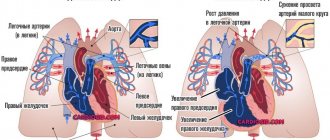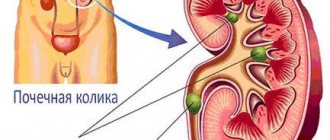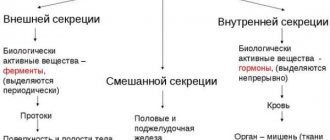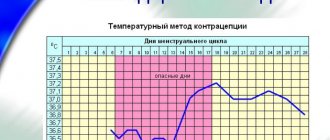- Home /
- Articles /
- Neuroma: types, symptoms, diagnosis
Neuroma (schwannoma) is a benign tumor that develops from Schwann cells. It is characterized by slow growth and in rare cases becomes malignant. Women are more susceptible to the disease - they get sick 1.5-2 times more often than men. The tumor can appear at any age. About 20% of schwannomas are extracranial, forming on the roots of the spinal nerves and on peripheral nerves. Intracranial schwannoma is diagnosed in 8-9% of cases.
Causes of neuroma formation
As is the case with other types of benign formations, the reasons why neuroma begins to form are not completely clear. Researchers are inclined to believe that there is a mutation in the genes of chromosome 22, which are responsible for protein synthesis. As a result of disruption of synthesis, uncontrolled growth of Schwann cells and their further proliferation occurs.
It is not known exactly why a mutation occurs in a chromosome, but we can talk about factors that contribute to it:
- radiation exposure;
- prolonged interaction with aggressive chemicals;
- the presence of other benign tumors in the body;
- hereditary predisposition of the body;
- neurofibromatosis type II in the patient or his immediate family.
Like neuroma, neurofibromatosis is a consequence of a mutation on chromosome 22. Therefore, if one of the parents is diagnosed with this disease, then the probability of the child inheriting it is more than 50%.
Etiology
Benign neuroma develops due to the pathological division of Schwann cells, which explains the second name of this disease. But what exactly provokes such a violation has not yet been established.
Predisposing factors for the development of pathology are:
- malignant schwannoma - can be genetically determined, that is, if there are cases of such a disease in the family history, then the risk of developing the same pathology in descendants significantly increases;
- dishormonal disorder;
- long-term use of hormonal drugs, antibiotics and similar heavy medications;
- frequent viral and infectious diseases;
- smoking, alcohol abuse, drug use;
- chronic stress, frequent nervous strain.
In some cases, neuroma forms after severe, with frequent relapses, diseases of a gastroenterological nature, musculoskeletal system, muscles and bone tissue.
Due to the fact that the exact etiology has not been established, specific methods of prevention have not been developed. Therefore, it is necessary to systematically undergo a medical examination in order to promptly diagnose the pathological process.
Symptoms of neuroma of various parts
Symptoms of any type of tumor, be it malignant or benign, directly depend on its location, size and degree of impact on the organ located nearby. With the same tumor size, the symptoms of intracranial, spinal and peripheral neuroma will manifest differently. As the tumor grows and penetrates deeper into the tissue, the compression on the organ located nearby increases.
Acoustic neuroma and brain
In acoustic neuroma, the tumor affects the brainstem and cerebellum.
When the auditory nerve is damaged, the following appears:
- Ringing in the ears is the first symptom to look out for. It is observed in most patients with neuroma, even if the tumor is just beginning to develop. With bilateral neuroma, it is noted in both ears;
- hearing loss. Occurs in 95% of patients. It appears on the one hand, slowly, starting with high tones, and leads to difficulty recognizing voices. In very rare cases, rapid development of hearing loss is observed;
- dizziness and lack of coordination. Appears at the stage when the schwannoma has reached a size of about 5 cm as a result of damage to the vestibular part of the vestibular-cochlear nerve. The first is instability when turning the head sharply, and then constant dizziness and problems maintaining balance. May be accompanied by nausea, vomiting, and fainting.
Compression of the trigeminal nerve
Occurs when the tumor has reached a size of more than 2 cm. The main signs: impaired sensitivity of the facial muscles, dull pain, similar to a toothache, on the side where the tumor is located. As the size of the tumor increases, complete or partial atrophy of the masticatory muscles may occur.
Compression of the facial and abducens nerve
Occurs when the tumor reaches a size of more than 4 cm. Damage to the facial nerve is manifested in loss of taste, impaired sensitivity of the facial muscles, and uncontrolled salivation. Pressure on the abducens nerve results in strabismus and double vision. At later stages, there is a disturbance in speech, swallowing, and breathing. In some cases, confusion or mental disorders occur.
Stages of intracranial neuroma
Stage I. Determined by an unexpressed clinical picture. The tumor is up to 2 cm, manifested by disorders of the trigeminal, facial and vestibulocochlear nerves.
II . Has pronounced clinical changes. The tumor is 2-4 cm, pressing on the brain stem or cerebellum. There is hearing loss, paralysis of the trigeminal and facial nerves, and loss of taste.
III . A tumor larger than 4 cm leads to speech impairment, swallowing and cerebellar disorders.
Spinal neuroma
Characteristic of the cervical or thoracic region, in rare cases - lumbar. It belongs to the extracerebral type of neoplasm, since it surrounds and compresses the spinal cord. Characteristic symptoms:
Radicular pain syndrome . Depends on which nerve the pressure is on. When the anterior one is compressed, muscle paralysis develops, while the posterior one develops pain and impaired sensitivity. In the irritation phase, periodic disturbances in sensitivity occur; in the phase of loss of functions, sensitivity can be completely lost.
The main manifestation of a radicular symptom is pain, which increases in a horizontal position and decreases in a standing position. In some cases, pain can easily be confused with an attack of angina.
Autonomic disorders. They are marked by disorders of the cardiovascular system and the functions of the pelvic organs and directly depend on the location of the tumor. In the cervical region - impaired swallowing function, difficulty breathing, hypertension. A tumor in the thoracic region affects the functions of the pancreas, stomach and heart (bradycardia). Localization in the lumbar region affects excretory function and erection. Characterized by increased sweating, redness or pallor of the skin.
Damage to the diameter of the spinal cord (Brown-Séquard syndrome) . It is characterized by spastic paralysis (paresis) on the side where the neuroma is located and a violation of deep sensitivity.
Manifested by loss of pain or temperature sensitivity on the opposite side, vasomotor disorders on the side where the tumor is located. Increased muscle tone and spasms are noted.
Cervical neuroma can grow through the intervertebral foramina. On x-ray it has an hourglass appearance; accompanied by changes in bone structure.
Peripheral neuromas
They are characterized by a superficial location and slow growth. The manifestation of symptoms depends on the location and organ on which the pressure is applied. It is one-sided in nature and is a small round or oval-shaped compaction. Occurs in places where there has been no previous injury or damage.
It is characterized by a sharp, shooting pain when pressed, followed by numbness. The primary symptomatology is manifested by a violation of sensitivity in the form of numbness, a sensation of goosebumps and coldness in the area where the nerve ending is located.
As the size of the tumor increases, muscle weakness and impaired muscle activity appear.
Diagnosis of the disease
To diagnose neuroma, a number of special examinations are performed. The choice of method directly depends on the expected location of the tumor. The main informative methods are:
- neurological examination;
- audiogram;
- CT, MRI;
- NMR (nuclear magnetic resonance).
A neurological examination is carried out by a neurologist and includes examination of the functions of the cranial nerves and basic reflexes. During the initial examination, the neurologist is based on the patient’s complaints, and then checks for the presence of the main symptoms characteristic of a particular location of the neuroma.
If an intracranial neuroma is suspected, these include:
- detection of nystagmus;
- identification of gait and movement coordination disorders;
- hearing test;
- determination of facial muscle sensitivity;
- identifying symptoms of facial nerve damage;
- double vision, blurred vision;
- checking the swallowing reflex;
- determination of the corneal reflex.
An audiogram is performed for acoustic neuroma and allows you to determine the degree of hearing loss. The study is carried out with sounds ranging in volume from 0 to 120 dB and of various frequencies.
CT and NMR. Both methods study brain tissue layer by layer, but CT is less informative, since it can detect a tumor larger than 1 cm. NMR (nuclear magnetic resonance) detects even the smallest neuromas. Nuclear resonance clearly shows the edges of the tumor, and when examining with a contrast agent, the tumor clearly appears as a white mass.
For spinal neuroma, the following is determined:
- muscle sensitivity;
- stiffness of movements;
- tendon reflexes;
- muscle strength/weakness.
Treatment of neuroma
Regardless of the location of the tumor, treatment can be carried out in several ways. However, it responds well to treatment, and the patient has a good prognosis.
Conservative treatment. Used in the early stages of the disease. Drugs that improve blood circulation in the brain are prescribed, as well as mannitol + glucocorticoids. Water and electrolyte balance and diuresis are monitored.
Surgical intervention. This is the most common type of treatment and is used in the early stages. The operation allows you to preserve the facial nerve intact, and it is also possible to preserve the patient’s hearing if the tumor size has not yet reached 2 cm.
Stereotactic radiosurgery. This method is a kind of alternative to surgery and radiation at the same time, and allows you to control tumor growth. In most cases, it is used to treat elderly people who, for some reason, cannot undergo surgery or if the patient himself refuses to undergo it. The method is effective if the tumor size does not exceed 30 mm.
Waiting tactics. It is used in the treatment of elderly people and involves constant monitoring of CT or MRI and monitoring of the patient. If urgent intervention is necessary, shunting is performed to remove the accumulated fluid.
Recommendations
Consultation with a neurosurgeon and magnetic resonance imaging of the brain are recommended.
| • | Leading specialists and institutions for the treatment of this disease in Russia: |
| Alexander N.K., Director of the Research Institute of Neurosurgery named after. Burdenko N.N. | |
| • | Leading specialists and institutions for the treatment of this disease in the world: |
| Professor Duke Samson, USA. |











